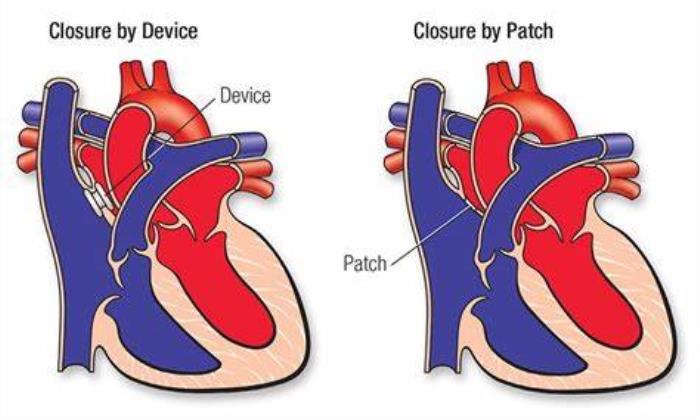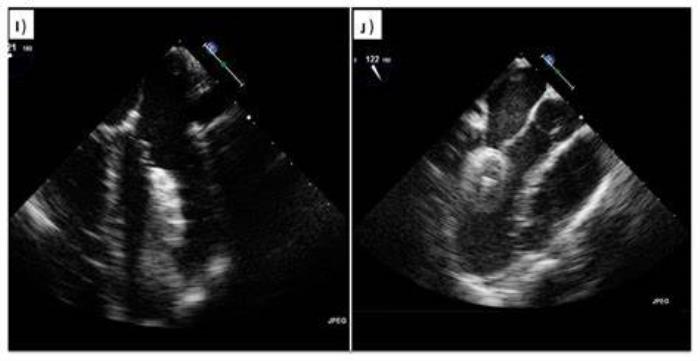Atrial Septal Defect (ASD) is a congenital heart condition marked by an opening in the septum between the atria. This defect allows abnormal blood flow between the heart's chambers, leading to an increased workload on the heart and lungs. While some small ASDs may close naturally during childhood, larger or symptomatic defects often require surgical intervention to prevent long-term complications such as heart failure or pulmonary hypertension. Understanding the latest advancements in ASD closure techniques highlights how far treatment options have evolved to improve outcomes.
The Need for ASD Closure Surgery: When Is It Recommended?
Surgical intervention for ASD is recommended in cases where the defect is large, symptomatic, or causing complications like an enlarged heart or elevated pulmonary pressures. Symptoms such as fatigue, shortness of breath, or frequent respiratory infections often indicate the need for closure. Additionally, surgery may be advised if the defect persists into adulthood, as untreated ASDs can increase the risk of arrhythmias, stroke, or pulmonary hypertension.
Traditional vs. Modern Approaches to ASD Closure
Historically, ASD closure involved open-heart surgery, requiring a sternotomy and heart-lung bypass machine support. While effective, this approach involved significant recovery time and risks. Modern techniques have shifted toward less invasive methods, such as catheter-based procedures, which offer quicker recovery, minimal scarring, and fewer complications. These advancements have transformed ASD treatment, making it accessible to a broader range of patients, including those at higher surgical risk.

Advances in Minimally Invasive ASD Closure Techniques
Minimally invasive procedures, such as catheter-based ASD closure, have revolutionized how this condition is treated. Using advanced imaging techniques, surgeons guide a catheter through a vein to the heart, where a closure device is deployed to seal the defect. This approach eliminates the need for a large incision, significantly reducing recovery time and pain while ensuring optimal outcomes.
The Role of Catheter-Based Procedures in ASD Treatment
Catheter-based ASD closure is now the standard for treating most secundum ASDs, the most common type. This technique involves inserting a specially designed closure device, such as an occluder, into the defect via a catheter. The device anchors itself to the septal walls, effectively sealing the hole. This outpatient procedure offers a safer alternative to traditional surgery, with a high success rate and minimal downtime for patients.
Innovations in ASD Closure Devices: A Comprehensive Overview
Recent advancements in closure devices have further enhanced the safety and effectiveness of ASD treatment. Modern devices are designed for precise deployment, reducing the risk of complications like residual shunting or embolization. They are also constructed from biocompatible materials to minimize inflammatory reactions and promote tissue integration, ensuring long-term stability. Customizable sizes and configurations allow for tailored solutions to fit each patient's unique anatomy.
Robotic-Assisted ASD Closure: The Future of Heart Surgery
Robotic-assisted surgery represents the cutting edge of ASD closure techniques. By combining minimally invasive methods with robotic precision, surgeons can perform complex procedures with unparalleled accuracy. Robotic systems enhance visualization, dexterity, and control, enabling surgeons to navigate intricate heart structures with minimal trauma. As technology continues to advance, robotic-assisted ASD closure may become a standard option, offering patients an even safer and more efficient path to recovery.
Benefits of Advanced Techniques for Patients and Recovery
Advanced techniques for Atrial Septal Defect (ASD) closure surgery, including minimally invasive and robotic-assisted procedures, offer numerous benefits. These include reduced recovery times, smaller incisions, less post-operative pain, and lower risks of infection. Patients often experience quicker returns to normal activities and improved overall outcomes compared to traditional open-heart surgery.
The Role of Imaging in Planning and Performing ASD Closure
High-resolution imaging modalities such as transesophageal echocardiography (TEE), cardiac MRI, and 3D imaging play a crucial role in diagnosing ASD, determining its size and location, and guiding precise closure procedures. These technologies ensure greater accuracy during surgery, minimizing risks and improving success rates.

Reducing Risks and Complications with New Technologies
Innovative tools, such as robotic-assisted surgery and advanced closure devices, reduce the likelihood of complications like residual shunting or arrhythmias. These technologies allow surgeons to perform more precise procedures, even in high-risk patients or complex cases.
How Advances Have Improved Outcomes for High-Risk Patients
High-risk patients, including those with coexisting conditions or larger defects, benefit significantly from advanced techniques. Customized approaches, such as hybrid procedures combining catheterization and surgery, enable effective treatment with minimized risks and enhanced safety.
Impact of Early Intervention on Long-Term Health
Advances in diagnostic tools and surgical techniques encourage earlier detection and intervention. Early ASD closure prevents complications like pulmonary hypertension, heart failure, and arrhythmias, ensuring better long-term health outcomes and reducing healthcare costs over time.
Pediatric Advances in ASD Closure Surgery: What Parents Should Know
For children, minimally invasive techniques and pediatric-specific closure devices have made ASD treatment safer and less traumatic. These advancements ensure faster recovery and minimal scarring, enabling children to resume normal activities with improved heart function.
Innovations in Post-Surgery Monitoring and Recovery Care
Post-surgery care has been enhanced by technologies like remote monitoring and wearable devices. These innovations allow healthcare providers to track patients' recovery progress and detect potential issues early, ensuring timely interventions and better outcomes.
The Role of Personalized Treatment Plans in ASD Management
Advanced diagnostic tools enable healthcare providers to create tailored treatment plans based on the patient’s unique anatomy, age, and health status. Personalized care improves the likelihood of successful surgery and minimizes complications.
Addressing Common Concerns About New Surgical Techniques
Patients and families may have concerns about the safety and reliability of advanced techniques. However, studies and clinical trials consistently demonstrate their effectiveness and safety, with lower complication rates compared to traditional approaches.
Comparing the Cost of Advanced Procedures to Traditional Methods
While advanced ASD closure procedures may have higher initial costs, they often result in reduced hospital stays, faster recovery, and fewer long-term complications, making them cost-effective in the long run.
Long-Term Benefits of Modern ASD Closure Approaches
Modern techniques ensure more complete defect closure, lower recurrence rates, and improved quality of life. Patients experience fewer complications and better overall heart health, reducing the need for future interventions.
Understanding the Latest Research in ASD Closure Surgery
Ongoing research in ASD closure surgery focuses on developing biocompatible closure devices, refining robotic-assisted techniques, and enhancing imaging tools. These innovations promise even better outcomes and expanded treatment options for complex cases.
The Impact of ASD on Heart Function and Overall Health
Understand how ASD affects heart function and overall health. Atrial Septal Defect can have significant effects on heart performance and general well-being if left untreated. This article discusses the consequences of ASD on heart function and the importance of timely treatment to prevent long-term health issues.
The Benefits of Robotic-Assisted Surgery for ASD Closure
Discover the advantages of robotic-assisted surgery for ASD closure. Robotic surgery offers improved precision, smaller incisions, and quicker recovery times. This article explores how this innovative approach enhances outcomes for patients undergoing Atrial Septal Defect (ASD) closure and how it contributes to faster, less invasive treatment.
Conclusion: Embracing Innovation for Better Heart Health
Advanced techniques for ASD closure surgery have revolutionized treatment, offering safer, more effective options for patients of all ages. By embracing innovation, healthcare providers can ensure better heart health, quicker recoveries, and improved quality of life for ASD patients.
Best ASD Closure Surgery in India
The Best ASD Closure Surgery in India is a procedure designed to close a hole in the heart’s atrial septum, improving blood flow and overall cardiac health in patients with atrial septal defects.
Best ASD Closure Surgery Hospitals in India
The best asd closure surgery hospitals in india provide advanced facilities and specialized cardiac teams, ensuring comprehensive care from initial assessment to post-surgical recovery.
ASD Closure Surgery Cost in India
The asd closure surgery cost in india is affordable and transparent, offering patients high-quality care and a range of options to suit their needs.
Best ASD Closure Surgeons in India
The Best ASD Closure Surgeons in India are experts in congenital heart procedures, providing personalized care and a high success rate for patients with atrial septal defects.
FAQ
What are the benefits of minimally invasive ASD closure surgery?
Minimally invasive techniques reduce recovery times, minimize scarring, lower infection risks, and result in quicker returns to daily activities compared to traditional open-heart surgery.
Are robotic-assisted surgeries widely available for ASD treatment?
Robotic-assisted surgeries are becoming more common in specialized centers, offering precise and less invasive treatment options for ASD.
How do modern techniques reduce recovery time for ASD patients?
Advanced techniques involve smaller incisions and less tissue trauma, leading to quicker healing and reduced hospital stays.
What types of closure devices are used in advanced ASD procedures?
Modern ASD procedures use devices like septal occluders, which are minimally invasive and made of biocompatible materials to ensure effective and safe defect closure.
Are advanced surgical options safe for children with ASD?
Yes, advanced surgical options, including minimally invasive and catheter-based procedures, are safe for children and offer faster recovery with minimal scarring.